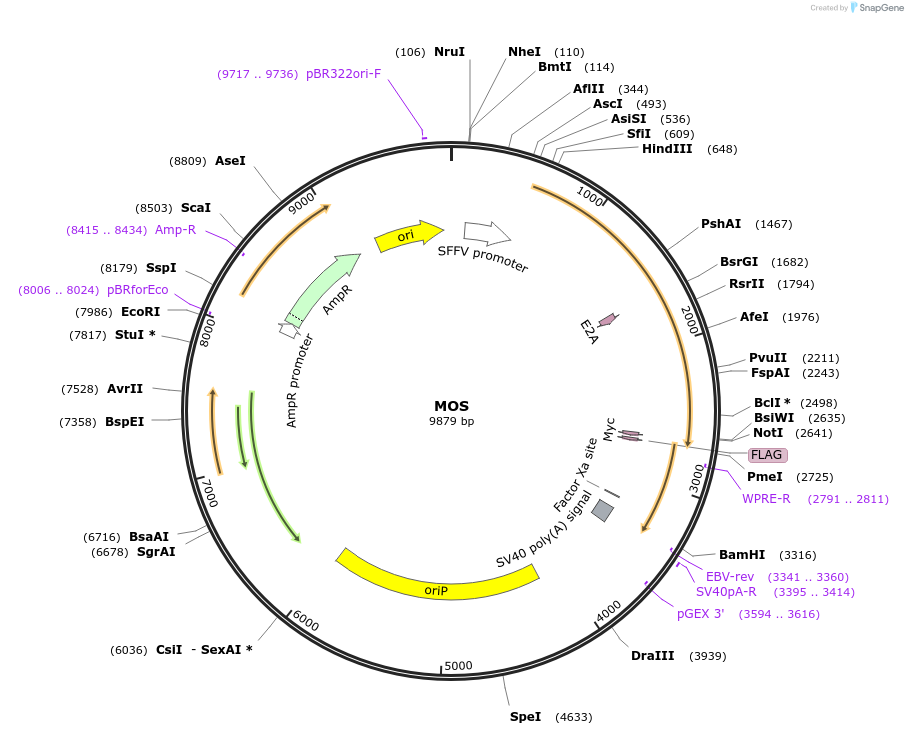-
PurposeA modified episomal (EBNA1/oriP) vector expressing human OCT4 and SOX2 genes
-
Depositing Lab
-
Sequence Information
Ordering
| Item | Catalog # | Description | Quantity | Price (USD) | |
|---|---|---|---|---|---|
| Plasmid | 64120 | Standard format: Plasmid sent in bacteria as agar stab | 1 | $89 | |
Backbone
-
Vector backbonepCEP4
- Total vector size (bp) 10503
-
Vector typeMammalian Expression
Growth in Bacteria
-
Bacterial Resistance(s)Ampicillin, 100 μg/mL
-
Growth Temperature37°C
-
Growth Strain(s)Top10
-
Copy numberUnknown
Gene/Insert
Cloning Information
- Cloning method Restriction Enzyme
- 5′ cloning site AsiSI (unknown if destroyed)
- 3′ cloning site PmeI (unknown if destroyed)
- 5′ sequencing primer 5-AGGCATGGAAAAATACCAAA, or 5-TAACCAATCAGCCTGCTTCT
- (Common Sequencing Primers)
Resource Information
-
Articles Citing this Plasmid
Terms and Licenses
-
Academic/Nonprofit Terms
-
Industry Terms
- Not Available to Industry
Trademarks:
- Zeocin® is an InvivoGen trademark.
These plasmids were created by your colleagues. Please acknowledge the Principal Investigator, cite the article in which the plasmids were described, and include Addgene in the Materials and Methods of your future publications.
-
For your Materials & Methods section:
MOS was a gift from Linzhao Cheng (Addgene plasmid # 64120 ; http://n2t.net/addgene:64120 ; RRID:Addgene_64120) -
For your References section:
A Facile Method to Establish Human Induced Pluripotent Stem Cells From Adult Blood Cells Under Feeder-Free and Xeno-Free Culture Conditions: A Clinically Compliant Approach. Chou BK, Gu H, Gao Y, Dowey SN, Wang Y, Shi J, Li Y, Ye Z, Cheng T, Cheng L. Stem Cells Transl Med. 2015 Mar 5. pii: sctm.2014-0214. 10.5966/sctm.2014-0214 PubMed 25742692







